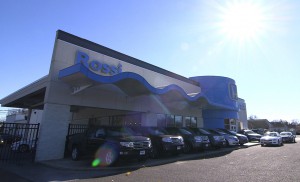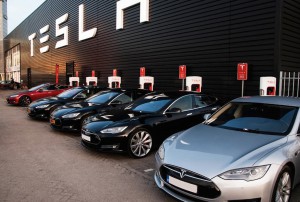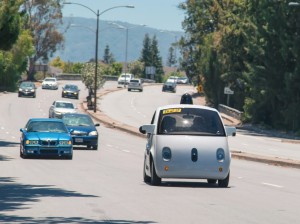
Starting in 2020, buyers wanting a semi-autonomous Honda can trek to their nearest dealership and plunk down some cash to get one.
The self-driving car field just got a little more crowded as Honda announced today it will sell a vehicle with automated highway driving capabilities sometime around 2020.
Without elaborating on the actual capabilities of the vehicle, Honda may be a bit behind or leaps ahead. If the vehicle is completely autonomous, then it would jump ahead of other automakers like Tesla, which recently introduced its autopilot program, Mercedes and Audi, which have limited capability vehicles available right now as well.
General Motors is planning to introduce its model year 2017 Cadillac CT6 flagship with its “Super Cruise” autonomous technology, but it won’t be fully self-driving when introduced. GM is readying to test a self-driving fleet of its Chevy Volt hybrids around its tech center campus in Warren, Michigan.
Google has been testing its autonomous cars for several years now on its corporate campus and recently expanded that to include the city streets of Mountain View, California. There is no timeline for when the tech giant might be ready to deliver cars.

Tesla may be the leader in autonomous vehicle technology as it recently integrated its autopilot technology into its 2014 and new Model S sedans.
Let’s not forget that Apple’s rumored Project Titan is also supposed to be an autonomous electric vehicle, although they’re still not saying much about their automotive interest … aside from that that they’re interested. Honda’s date is somewhat fortuitous as it’s the same year Nissan and Toyota also plan to debut their self-driving vehicles.
A spokesman for Japan’s No. 3 automaker declined to give details about the vehicle’s planned capabilities ahead of next week’s Tokyo Motor Show, according to Reuters, where other Japanese automakers are expected to show “robot car” prototypes to the public.
(Tesla’s autopilot opens door to autonomous cars. For more, Click Here.)
Joining Tesla in the “recently rolled out” autonomous market is the aforementioned Toyota, which debuted a modified Lexus GS that can drive itself using the maker’s “Highway Teammate” program. However, it’s limited – much like the Tesla – to highway speeds only and it must pass a sensor letting the vehicle know it’s safe to engage its autonomous mode.
Toyota’s system is less an autopilot than co-pilot, designed to handle relatively mundane chores as an assistant to a human driver who will remain in control, especially on more crowded urban roads. Some competitors, notably including Nissan, hope to have fully autonomous products that can navigate all roads on sale by as early as 2020.
“Toyota believes that interactions between drivers and cars should mirror those between close friends who share a common purpose, sometimes watching over each other and sometimes helping each other out,” the maker said prior to a demonstration of the Highway Teammate technology in Tokyo.

Google is still perfecting its fully autonomous vehicle technology on the streets of Mountain View, California.
While all of the systems coming to the fore in the next five years offer some form of driver assistance, it’s really only Google’s bubble-looking vehicles that are working on a completely autonomous premise. The tech company’s vehicles ultimately would not have any form of driver controls, i.e. a steering wheel, gas or brake pedal, only a red button that allows a passenger to shut the car off in the event of an emergency.
(Click Here for details about Toyota’s new autonomous “Highway Teammate.”)
Really the holy grail of the segment, Google has demonstrated some of the challenges of this brave new world. So far, it has reported more than a dozen crashes, mostly minor, involving its various autonomous vehicles. None were caused by using self-driving technology, it contends. But it appears that a number of rear-end crashes occurred when the cars quickly stopped on a yellow while drivers behind attempted to run the light.
The only thing lagging the technology are the rules and regulations for it. Federal and state governments are scrambling to figure out how to deal with this onslaught of technology. Right now, less than 10 states even allow autonomous testing on their roadways.
The National Highway Traffic Safety Administration is still mulling over what it should be doing in regards to autonomous vehicles. That said, Mark Rosekind, the agency’s administrator, appears to be in favor of the technology.
“If technology will reduce deaths on American roads, [the NHTSA is] for it, right now,” he said recently, adding that of the 32,000 traffic deaths in the U.S. annually, 94% are attributable to driver error.
(Apple moving fast on still-secret autonomous EV car program. Click Here for inside details.)
The agency recognizes four classifications or levels of autonomous vehicles. To give you an idea, adaptive cruise control is basically level two of the standard.
